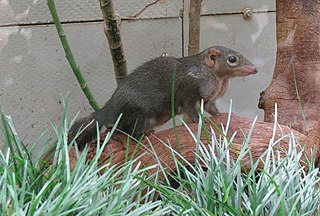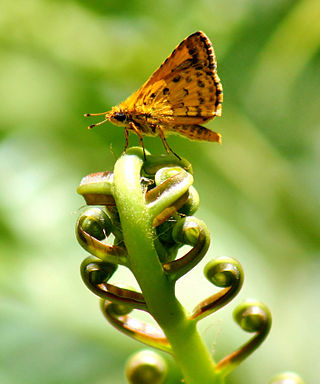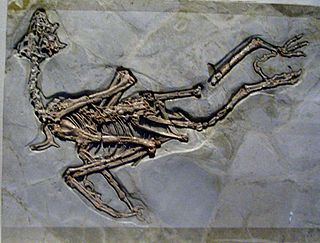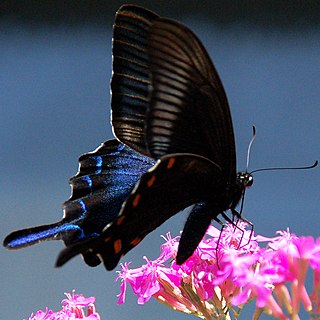
Eutamias is a genus of chipmunks within the tribe Marmotini of the squirrel family. It includes a single living species, the Siberian chipmunk. The genus is often treated as a subgenus of Tamias, which is now restricted to the eastern chipmunk of North America. Neotamias, which now includes the western North American chipmunks, has also been included in Eutamias.

Jeholornis is a genus of avialans that lived between approximately 122 and 120 million years ago during the early Cretaceous Period in China. Fossil Jeholornis were first discovered in the Jiufotang Formation in Hebei Province, China and additional specimens have been found in the older Yixian Formation.

The northern treeshrew is a treeshrew species native to Southeast Asia.

The masked palm civet, also called the gem-faced civet or Himalayan palm civet, is a viverrid species native to the Indian subcontinent and Southeast Asia. It has been listed as least concern on the IUCN Red List since 2008 as it occurs in many protected areas, is tolerant to some degree of habitat modification, and widely distributed with presumed large populations that are unlikely to be declining.
Sinocyclocheilus is a genus of freshwater fish in the family Cyprinidae endemic to China, only found in Guangxi, Guizhou and Yunnan. Almost all of its species live in or around caves and most of these have adaptions typical of cavefish such as a lack of scales, lack of pigmentation and reduced eyes. Several species have an unusual hunchbacked appearance and some of the cave-dwellers have a "horn" on the back, the function of which is unclear. In contrast, the Sinocyclocheilus species that live aboveground, as well as a few found underground, show no clear cavefish adaptions. They are relatively small fish reaching up to 23 cm (9.1 in) in length. The individual species have small ranges and populations, leading to the status of most of the evaluated species as threatened. Many species populations in the genus have yet to be evaluated by the IUCN.

Ampittia is the genus of bush hoppers in the skipper butterfly family, Hesperiidae. It is the only member of the tribe Ampittiini.

Triplophysa is a genus of fish in the family Nemacheilidae found mainly in and around the Qinghai-Tibet Plateau in China. Currently, the genus is a mixed assemblage of species. Some lineages have been identified and treated as subgenera, but as Wikipedia follows Fishbase for fish species all but Hedinichthys have been treated as subgenera in Wikipedia, although Kottelat in his revision of the loaches did recognise them as valid. FishBase, however, includes these in Triplophysa without specifying subgenera and treats the names given by Kottelat as synonyms.

Tajuria is an Indomalayan genus of butterflies in the family Lycaenidae.

Tongeia is a Palearctic genus of butterflies in the family Lycaenidae found in temperate East Asia. Most species are endemic to China and many species are recently described from China. The best known species is the more widely distributed Tongeia fischeri.

Avebrevicauda is a group which includes all avialan species with ten or fewer free vertebrae in the tail. The group was named in 2002 by Gregory S. Paul to distinguish short-tailed avialans from their ancestors, such as Archaeopteryx, which had long, reptilian tails.
The Hainan peacock-pheasant is an endangered bird that belongs to the pheasant family Phasianidae. This extremely rare species is endemic to the island of Hainan, China.
The Huajiying Formation is a geological formation in Hebei, People's Republic of China. Known for its fossils including feathered dinosaurs, the age of the formation is uncertain. It may represent an early portion of the Jehol Biota, dating to somewhere in the early Cretaceous or late Jurassic periods. It may correlate with the early Cretaceous Dadianzi Formation and parts of the Yixian Formation, with an age range between 140 and 122 Ma ago. It contains the Qiaotou Member, sometimes treated as a distinct formation.

Bullacta exarata, common name the Korean mud snail, is a species of a sea snail or bubble snail, a marine gastropod mollusc in the family Haminoeidae, the bubble snails.

Ampittia virgata is a species of butterfly in the family Hesperiidae. It was described by John Henry Leech in 1890. It is found in China and Taiwan. Its wingspan is 30–32 mm. Cell of forewing beneath yellow with a black streak in the centre.

Achillides, the peacock swallowtails, are a subgenus within the genus Papilio containing 25 species.
Papilio longimacula, is a species of butterfly in the family Papilionidae. It is found in China.
Wang Enge is a Chinese physicist and academician of the Chinese Academy of Sciences. He succeeded Zhou Qifeng to the office of the President of Peking University on 22 March 2013. From 15 February 2015, he becomes the Vice President of Chinese Academy of Sciences.

Caryanda is large genus of grasshoppers in the subfamily Caryandinae. Species are recorded from Africa and Asia.












